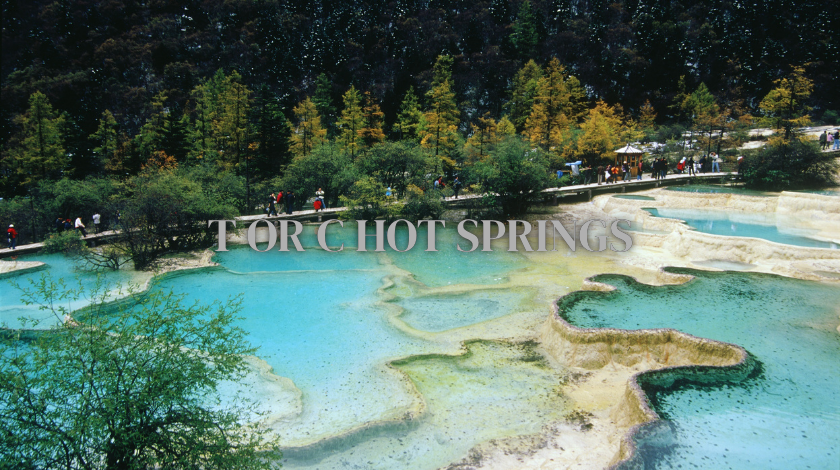If you’ve ever driven through southern New Mexico, you might have noticed a small desert town with a strange name: Truth or Consequences — often called T or C by locals. Most people stop here for one reason: the hot springs. Hidden behind modest bathhouses, cozy inns, and riverside resorts, these springs have been drawing travelers for generations.
They’re not flashy or over-developed. There are no giant water parks or loud music. Instead, T or C hot springs offer quiet, restorative moments surrounded by desert views, clear blue skies, and the soft hum of the Rio Grande nearby.
Whether you want to ease sore muscles, escape city noise, or just experience something authentically New Mexican, T or C is a place where time slows down. In this article, we’ll go through the full story — how these springs formed, where to soak, what to expect, and why they’ve become such a beloved part of the Southwest.
1. The Story and Science Behind the Springs
A Geothermal Gift
Truth or Consequences sits on top of a geothermal aquifer, where underground water is heated by the earth’s natural energy. When it rises through layers of rock, it picks up minerals like chloride, sulfate, magnesium, and lithium. By the time it reaches the surface, it’s warm — usually between 100°F and 108°F — and full of elements that people believe have healing properties.
Unlike some hot springs that smell like rotten eggs (thanks to sulfur), T or C’s waters are odorless and crystal clear. The texture is often described as “silky.” After a soak, your skin feels soft, and your muscles feel lighter.
From Ancient Healing to Modern Relaxation
Long before bathhouses were built, Native American tribes, including the Apache, visited these waters. The area was considered sacred, a place of prayer and physical healing.
European settlers arrived in the late 1800s and turned the area into a health-tourism hub. By the 1930s, bathhouses lined the streets, and visitors came from across the U.S. to treat arthritis, rheumatism, and chronic pain.
The town was originally called Hot Springs, New Mexico, until 1950, when a popular radio show, Truth or Consequences, challenged a town to rename itself after the program. The local residents agreed, and the name stuck. Now, everyone just calls it T or C — and the springs are still the heart of its identity.
2. How the Hot Springs Work
Each spring in T or C draws water from the same geothermal source, but each bathhouse manages it a little differently. The water flows naturally from the ground, no pumping needed, and is directed through channels or pipes into pools.
Some places cool it down slightly to reach safe soaking temperatures (usually between 99°F and 104°F). The constant flow means the pools are refreshed throughout the day — the water doesn’t stagnate or get recycled. That’s one reason T or C’s hot springs feel especially clean and soothing.
Operators test and monitor their pools daily, keeping the pH balanced and the temperature safe. The total flow rate from all springs combined is about 2.5 million gallons of water per day, a remarkable natural output for such a small town.
If you’re new to soaking, limit your first session to around 20–30 minutes. The desert heat and the warm water can be intense, especially if you’re not used to it. Bring drinking water, avoid alcohol, and listen to your body.
Read Also: M&t bank branches in buffalo and lockport are closing
3. The Best Hot Springs and Bathhouses in T or C
Truth or Consequences isn’t a big town, but it has a surprisingly wide range of places to soak. You can choose from historic bathhouses, riverside spas, and boutique hotels with private in-room tubs. Below are some of the most popular and reliable spots.
Riverbend Hot Springs
If you’ve seen photos of T or C online, they were probably taken at Riverbend Hot Springs. This resort sits right on the Rio Grande, with stunning mountain views.
Riverbend offers both communal and private soaking options. The communal pools are stone-lined and open to the river. Private pools, on the other hand, are semi-enclosed and designed for two people — perfect for couples or anyone who wants quiet.
Temperatures range from 95°F to 105°F, and the resort enforces a “whisper-only” policy, so the experience stays calm and meditative. The private rooms have names like Apache and Zuni, and many guests say the silence, stars, and natural water make it one of the most relaxing experiences in the state.
Book ahead if you want a private soak. They fill up fast, especially on weekends.
Blackstone Hotsprings
If you prefer privacy and comfort, Blackstone Hotsprings might be your best pick. It’s a retro-modern boutique hotel where most guest rooms have in-room mineral tubs fed directly by the springs.
Each suite has a different theme (inspired by classic TV shows), and the decor mixes nostalgia with style. You can soak privately, right in your room, or use their public soaking tubs if you’re not staying overnight.
The water is naturally clear and around 107°F at the source, though it’s cooled for safe bathing. Guests love that they can soak at any time, day or night, without ever leaving their room.
La Paloma Hot Springs & Spa
La Paloma (formerly Marshall Hot Springs) is one of the few bathhouses that still use free-flowing geothermal water. That means the water is never recirculated or pumped — it flows in, fills your tub, and drains out naturally.
This spot has both indoor and outdoor pools, each with a rustic, old-New-Mexico feel. The atmosphere is quieter and less commercial, perfect for travelers who want an authentic, no-frills experience.
The owners often encourage guests to stay unplugged and reflect — it feels more like a retreat than a spa.
Hoosier Hot Springs & Inn
Hoosier Hot Springs is one of the newer-revived historic spots. It was built in the 1930s and has been lovingly restored. Guests can book a room at the inn and enjoy four different soaking areas, including one inside the original 1937 bathhouse.
It’s adults-only and designed for peace and privacy. The outdoor tubs are surrounded by adobe walls and desert landscaping, making them a quiet, intimate escape.
Many visitors say it feels like “stepping back in time,” but with modern comfort.
Pelican Spa
Pelican Spa is colorful, quirky, and fun. It’s part art space, part spa, part retro motel. The rooms are bright, the decor is eclectic, and the vibe is very T or C — laid-back, welcoming, and full of personality.
Soaking here feels casual and local. It’s not fancy, but it’s genuine. Many people stay for a few nights, wander through the town, and chat with other travelers who came for the same reason: to unwind.
4. What It’s Like to Soak
There’s no wrong way to enjoy T or C’s springs, but here’s what most visitors experience.
You step into warm water that’s perfectly clear. It feels silky against your skin, not slippery or heavy. The first few minutes melt away the stiffness in your shoulders. The desert air is dry and clean, and often you can hear the faint flow of the river nearby.
If you go in the evening, you might see the sun dip behind the mountains, turning the sky orange and purple. At night, the stars are brilliant — no big-city glow to drown them out.
Most people describe the feeling afterward as “reset.” You feel lighter, calmer, and a little sleepy — the good kind of tired.
If you’re sensitive to heat, choose a pool under 102°F and take breaks. Your body will adapt, and you’ll find your ideal temperature after a few tries.
5. The Health and Wellness Benefits
People have believed in the healing power of hot springs for centuries. Ancient Romans built bathhouses around them. Japanese onsen culture still thrives today. And in New Mexico, locals swear by the “curative” qualities of the mineral water.
The Claimed Benefits
-
Eases muscle tension and joint pain
-
Improves blood circulation
-
Reduces stress and helps sleep
-
Softens skin and supports detoxification
-
Relieves mild arthritis and inflammation
While not all these claims are scientifically proven, the benefits of warm-water immersion are well documented. Heat helps muscles relax, increases blood flow, and may reduce pain perception. Even without medical evidence, most people agree that soaking makes them feel better, calmer, and refreshed.
Precautions
Hot springs aren’t for everyone. Pregnant women, people with heart disease, or those with very high or low blood pressure should talk to a doctor before soaking.
Drink plenty of water before and after. Avoid alcohol or heavy meals right before soaking. And if you start feeling dizzy or too hot, step out and cool off.
The key is moderation. You’ll feel the benefits without overdoing it.
6. Planning Your Visit
When to Go
T or C’s hot springs flow year-round, but your experience will change with the seasons.
-
Winter (Dec–Feb): Crisp air and warm water — the contrast feels amazing.
-
Spring (Mar–May): Mild weather and blooming desert flowers.
-
Summer (Jun–Aug): Hot days, best for early morning or late-night soaks.
-
Fall (Sep–Nov): Comfortable temperatures and fewer crowds.
If you want the quietest experience, visit midweek. Weekends get busy with locals and road-trippers from Albuquerque or El Paso.
How Long to Soak
Most people soak between 20 and 60 minutes total, often in shorter sessions.
Listen to your body. If you start sweating heavily, feel lightheaded, or notice your heart pounding, get out and cool off.
What to Bring
-
Towel and flip-flops
-
Water bottle
-
Swimsuit (unless clothing-optional)
-
Sunglasses and hat (for outdoor pools)
-
Lightweight robe or change of clothes
-
A calm mindset — this isn’t a party spot; it’s a place to unwind.
Etiquette and Tips
-
Many places have quiet or whisper-only policies. Respect them.
-
Shower before soaking if the facility asks.
-
No glass, food, or alcohol in pools.
-
Be on time for your session; others are waiting after you.
-
Tip your attendants if service is provided — they keep the pools clean and comfortable.
7. Things to Do Nearby
When you’re done soaking, there’s more to see in and around T or C.
Healing Waters Trail
A self-guided walking path that loops around the historic bathhouse district. You’ll see old buildings, murals, and signs that explain the history of the springs. It’s a peaceful way to explore downtown.
Geronimo Springs Museum
A small but fascinating local museum with exhibits on Native American history, Spanish settlement, mining, and the town’s quirky renaming story. It’s worth a short visit before or after your soak.
Elephant Butte Lake
Just a 10-minute drive away, this large reservoir offers boating, fishing, and beach areas. On hot days, many visitors spend the morning at the lake and the evening soaking in the springs.
Local Art and Dining
T or C has a growing community of artists and small cafes. The Art Hop on the second Saturday of each month is fun — galleries stay open late, and the streets come alive.
For food, try the Giddy Up Café or Latitude 33 for casual eats. It’s all very local and friendly.
Spaceport America
For something totally different, you can take a tour of Spaceport America, located about 30 minutes away. It’s the world’s first purpose-built commercial spaceport and a cool side trip if you love science or space travel.
8. Voices and Experiences
One of the best parts of visiting T or C is how personal it feels. Everyone comes for different reasons.
A woman I met at Riverbend told me she drove 600 miles from Denver just to “clear her head.” She sat quietly by the river every morning and watched the sunrise from her pool. “It’s cheaper than therapy,” she said, laughing.
Another couple from Arizona said they come every winter for a week. They stay at Blackstone, cook in their suite, soak twice a day, and leave feeling like new people.
I stayed two nights at La Paloma once. It wasn’t fancy — just quiet. The owner handed me a towel and said, “The water will do the rest.” And it did. By the time I left, my shoulders had dropped two inches, and I felt like I could breathe deeper.
That’s what keeps people coming back — not luxury, but simplicity. The springs give you space to just be.
9. Protecting the Future
As the town grows more popular, keeping the springs healthy is critical. Local organizations monitor the aquifer’s temperature and mineral balance to make sure it stays stable.
Some bathhouses have started using eco-friendly systems to reduce waste and water use. Others are renovating historic buildings instead of tearing them down, preserving the town’s old charm.
Visitors can help too: don’t litter, don’t use soaps in the pools, and support local businesses that respect the land. The water is a shared resource — everyone plays a role in protecting it.
Conclusion
Truth or Consequences may not be a big city or a flashy resort town, but that’s its secret strength. It’s peaceful, affordable, and deeply authentic.
The T or C hot springs aren’t just about soaking — they’re about slowing down, reconnecting with yourself, and feeling grounded in a place that has been healing people for centuries.
Whether you choose a riverside pool at Riverbend, a private tub at Blackstone, or a simple bathhouse downtown, you’ll leave with the same feeling: calm, clear, and a little more human.
If you ever find yourself driving through southern New Mexico, take the turnoff to Truth or Consequences. Bring a towel, take a breath, and let the earth’s warmth remind you what it means to rest.
Frequently Asked Questions
Q: Do I need a reservation?
Most bathhouses accept walk-ins, but private pools (especially at Riverbend or Blackstone) often require reservations. Booking ahead is smart, especially on weekends.
Q: Are children allowed?
Some places allow kids with supervision, while others (like Hoosier Hot Springs) are adults-only. Always check the spa’s policy before going.
Q: What’s the best time to soak?
Early morning or after sunset. The temperatures are cooler, and the experience feels more peaceful.
Q: Are the springs smelly?
No. Unlike many hot springs, T or C’s waters are odorless and clear — no sulfur smell at all.
Q: How hot are the pools?
They usually range from 95°F to 108°F, depending on the location and time of year.
Q: Can I stay overnight?
Yes. Many spas like Blackstone, Riverbend, and Hoosier have lodging options that include soaking privileges.
Q: Is it worth visiting if I’ve been to other hot springs?
Absolutely. T or C isn’t about luxury — it’s about peace and authenticity. Most visitors say it’s one of the most calming experiences they’ve ever had.




